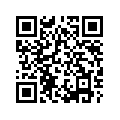| Computer Society Home | Computational Intelligence Society Home |
|
IEEE.org | |IEEE Xplore Digital Library | IEEE Standards Association | IEEE Spectrum Online | More IEEE Sites |
| Computer Society Home | Computational Intelligence Society Home |
|
IEEE.org | |IEEE Xplore Digital Library | IEEE Standards Association | IEEE Spectrum Online | More IEEE Sites |

|
Rochester Joint Chapter of the IEEE Computer and Computational Intelligence SocietiesRochester, New York |

|
|
Date: Friday, December 1, 2017 |

|
AbstractGraph-structured data and its attendant "network science" are a leading paradigm in data analytics. As a kind of relational mathematical model, graph data are typified by sparse connections amongst a large collection of entities, as is common, for example in social, biological, or infrastructure networks. Graphs code pairwise associations between entities, and we thus recognize them as a special case, compared to the general case of coding associations amongst an arbitrary number of entities. Hypergraphs are this more general structure, providing a natural representation of a range of such sources as set-valued data, tabular data, and bipartite data. As hypergraph-structured data are more general than graph-structured data, so hypergraphs formally generalize graphs as mathematical objects; indeed, we can conceive of hypergraphs literally as "multi-dimensional graph". But while hypergraph methods are not novel in data science, they are hardly prominent. This is in large part due to their higher formal and data complexity, despite the ubiquity of multi-dimensional data sources. But researchers willing to pay the price for hypergraph methods can gain both a more natural structure for multi-dimensional data, and a much richer mathematical paradigm to operate in, including access to a collection of combinatorial and topological methods not available on graphs. Our research group is dedicated to this range of topics in complex data analysis. In this talk I will review this landscape, including the mathematical foundations of hypergraph models, generalizations of network science methods to multi-dimensional graphs, the use of hypergraphs as the foundations of canonical information fusion methods based on topological sheaves, and our applications to both test and real-world data sets. Speaker's Biography
|
| Rochester Chapter Home | Rochester Section Home | Privacy & Security | Terms & Conditions | Nondiscrimination Policy | |
|
© Copyright 2016 IEEE – All Rights Reserved. Use of this Web site signifies your agreement to the terms and conditions. |
|
|
If you would like to contact the
Rochester Joint Chapter of the IEEE Computer and Computational Intelligence Societies Webmaster,
use the email link on the
Officer's page for the Joint Computer Chapter
Webmaster.
(Modified: 20-November-2017 JC) |